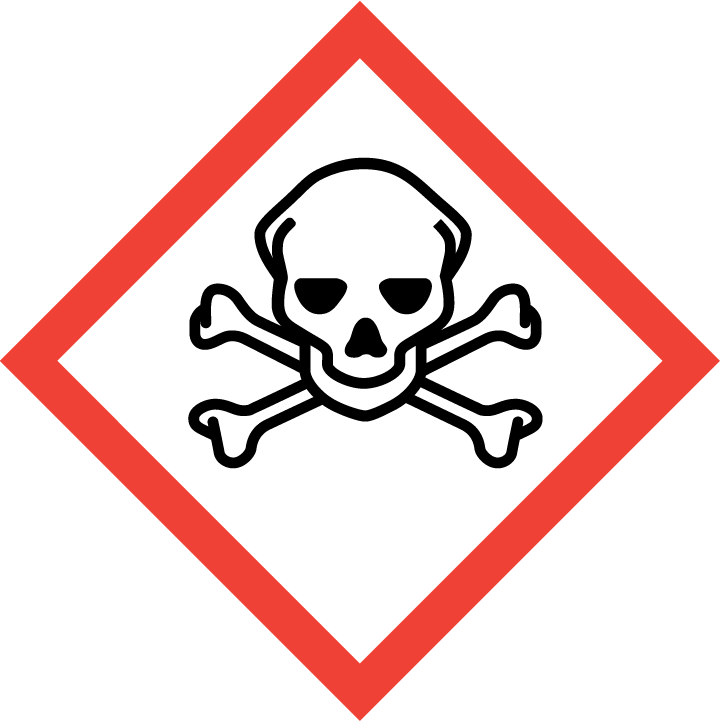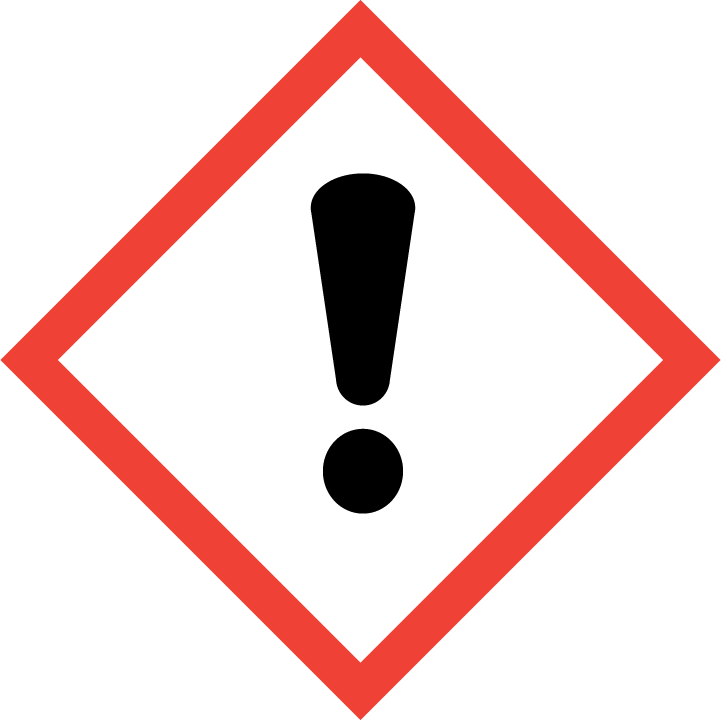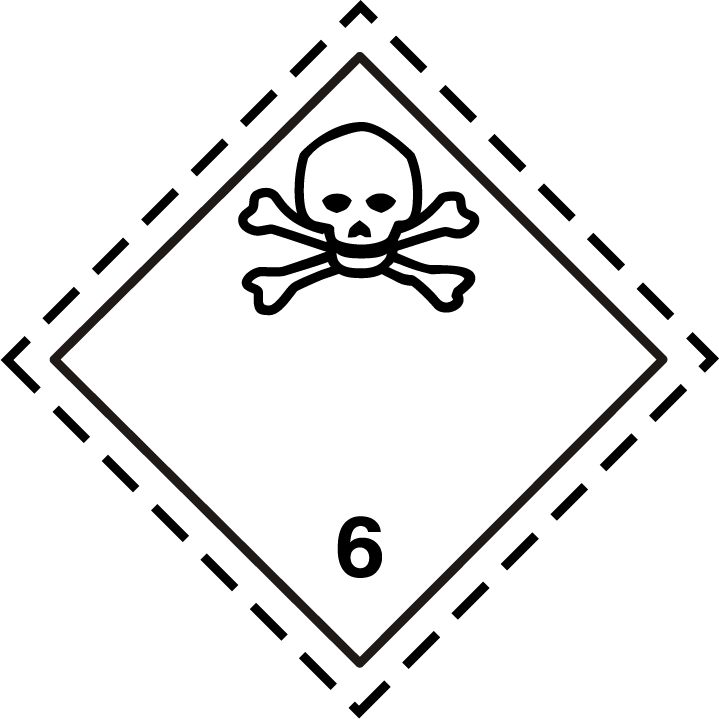SAFETY DATA SHEET
CMCP-9 LOW VISCOSITY MOUNTANT
1. IDENTIFICATION
Product Identifiers
Product Name:
CMCP Macroinvertebrate Mountant
Other Names:
Product Number(s):
EMS18003-01, EMS18004-02
CAS Number:
Recommended use of the chemical and restriction on use
Laboratory use
Company Details
ProSciTech Pty Ltd
11 Carlton Street
KIRWAN QLD 4817
Australia(07) 4773 9444www.proscitech.com
11 Carlton Street
KIRWAN QLD 4817
Australia(07) 4773 9444www.proscitech.com
Emergency Contact Details
ProSciTech Pty Ltd
11 Carlton Street
KIRWAN QLD 4817
Australia(07) 4773 9444www.proscitech.com
11 Carlton Street
KIRWAN QLD 4817
Australia(07) 4773 9444www.proscitech.com
2. HAZARDS IDENTIFICATION
Classification of the substance or mixture
GHS06 Skull and crossbones
Acute Toxicity - Inhalation 3 H331 Toxic if inhaled.
GHS08 Health hazard
Specific Target Organ Toxicity - Single Exposure 2 H371 May cause damage to organs.
Specific Target Organ Toxicity - Repeated Exposure 2 H373 May cause damage to organs through prolonged or
repeated exposure.
GHS05 Corrosion
Skin Corrosion 1B H314 Causes severe skin burns and eye damage.
GHS07
Acute Toxicity - Oral 4 H302 Harmful if swallowed.
Acute Toxicity - Inhalation 3 H331 Toxic if inhaled.
GHS08 Health hazard
Specific Target Organ Toxicity - Single Exposure 2 H371 May cause damage to organs.
Specific Target Organ Toxicity - Repeated Exposure 2 H373 May cause damage to organs through prolonged or
repeated exposure.
GHS05 Corrosion
Skin Corrosion 1B H314 Causes severe skin burns and eye damage.
GHS07
Acute Toxicity - Oral 4 H302 Harmful if swallowed.
Label Elements




Signal Words
Danger
Hazard Statement(s)
phenol
Lactic acid
· Hazard statements
Harmful if swallowed.
Toxic if inhaled.
Causes severe skin burns and eye damage.
May cause damage to organs.
May cause damage to organs through prolonged or repeated exposure.
Immediately call a poison center/doctor.
IF exposed or concerned: Call a poison center/doctor.
Specific treatment (see on this label).
Get medical advice/attention if you feel unwell.
Wash contaminated clothing before reuse.
Lactic acid
· Hazard statements
Harmful if swallowed.
Toxic if inhaled.
Causes severe skin burns and eye damage.
May cause damage to organs.
May cause damage to organs through prolonged or repeated exposure.
Immediately call a poison center/doctor.
IF exposed or concerned: Call a poison center/doctor.
Specific treatment (see on this label).
Get medical advice/attention if you feel unwell.
Wash contaminated clothing before reuse.
Precautionary Statement(s)
Do not breathe dusts or mists.
Wash thoroughly after handling.
Do not eat, drink or smoke when using this product.
Use only outdoors or in a well-ventilated area.
Wash thoroughly after handling.
Do not eat, drink or smoke when using this product.
Use only outdoors or in a well-ventilated area.
Primary route(s) of entry
Human Health
Inhalation:
IF INHALED: Remove person to fresh air and keep comfortable for breathing
Ingestion:
If swallowed: Call a poison center/doctor if you feel unwell.
If swallowed: Rinse mouth. Do NOT induce vomiting.
If swallowed: Rinse mouth. Do NOT induce vomiting.
Eyes:
Wear eye protection / face protection.
Skin:
If on skin (or hair): Take off immediately all contaminated clothing. Rinse skin with water/shower.
Environment
Store in a well-ventilated place. Keep container tightly closed.
Store locked up.
Dispose of contents/container in accordance with local/regional/national/international regulations.
Store locked up.
Dispose of contents/container in accordance with local/regional/national/international regulations.
3. COMPOSITION/INFORMATION ON INGREDIENTS
Name
CAS No.
Content (w/w)
Classification
phenol
108-95-2
>10-≤25%
Not Available
Lactic acid
598-82-3
>10-≤25%
Not Available
4. FIRST AID MEASURES
Ingestion
Do not induce vomiting; immediately call for medical help.
Drink copious amounts of water and provide fresh air. Immediately call a doctor.
Drink copious amounts of water and provide fresh air. Immediately call a doctor.
Inhalation
Supply fresh air or oxygen; call for doctor.
In case of unconsciousness place patient stably in side position for transportation
In case of unconsciousness place patient stably in side position for transportation
Skin Contact
Immediately wash with water and soap and rinse thoroughly.
Eye Contact
Rinse opened eye for several minutes under running water. Then consult a doctor.
Other Information
· General information:
Immediately remove any clothing soiled by the product.
Symptoms of poisoning may even occur after several hours; therefore medical observation for at least 48 hours
after the accident.
Remove breathing apparatus only after contaminated clothing have been completely removed.
In case of irregular breathing or respiratory arrest provide artificial respiration.
Immediately remove any clothing soiled by the product.
Symptoms of poisoning may even occur after several hours; therefore medical observation for at least 48 hours
after the accident.
Remove breathing apparatus only after contaminated clothing have been completely removed.
In case of irregular breathing or respiratory arrest provide artificial respiration.
5. FIREFIGHTING MEASURES
Suitable extinguishing equipment
: Use fire fighting measures that suit the environment
HAZCHEM
No further relevant information available
Special protective equipment and precautions for fire fighters
6. ACCIDENTAL RELEASE MEASURES
Personal precautions, protective equipment and emergency procedures
Wear protective equipment. Keep unprotected persons away.
Environmental precautions
Do not allow to enter sewers/ surface or ground water.
Methods and materials for containment and clean up
Absorb with liquid-binding material (sand, diatomite, acid binders, universal binders, sawdust).
Use neutralizing agent.
Dispose contaminated material as waste according to item 13.
Ensure adequate ventilation.
· Reference to other sections
See Section 7 for information on safe handling.
See Section 8 for information on personal protection equipment.
See Section 13 for disposal information.
Use neutralizing agent.
Dispose contaminated material as waste according to item 13.
Ensure adequate ventilation.
· Reference to other sections
See Section 7 for information on safe handling.
See Section 8 for information on personal protection equipment.
See Section 13 for disposal information.
7. HANDLING AND STORAGE
Precautions for safe handling
Ensure good ventilation/exhaustion at the workplace.
Open and handle receptacle with care.
Prevent formation of aerosols.
Information about protection against explosions and fires: Keep respiratory protective device available.
Open and handle receptacle with care.
Prevent formation of aerosols.
Information about protection against explosions and fires: Keep respiratory protective device available.
Conditions for safe storage
· Information about storage in one common storage facility: Not required.
· Further information about storage conditions: Keep receptacle tightly sealed.
· Specific end use(s) No further relevant information available.
8. EXPOSURE CONTROLS/PERSONAL PROTECTION
Exposure Standards
Material
TWA ppm
TWA mg/m3
STEL ppm
STEL mg/m3
phenol
5 ppm
19mg/m³
15.6 ppm
60mg/m³
Engineering controls
· General protective and hygienic measures:
Keep away from foodstuffs, beverages and feed.
Immediately remove all soiled and contaminated clothing.
Wash hands before breaks and at the end of work.
Store protective clothing separately.
Avoid contact with the eyes and skin.
Keep away from foodstuffs, beverages and feed.
Immediately remove all soiled and contaminated clothing.
Wash hands before breaks and at the end of work.
Store protective clothing separately.
Avoid contact with the eyes and skin.
Personal protective equipment
Eye and face protection
Tightly sealed goggles
Skin protection
· Protection of hands:
Protective gloves
The glove material has to be impermeable and resistant to the product/ the substance/ the preparation.
Due to missing tests no recommendation to the glove material can be given for the product/ the preparation/ the
chemical mixture.
Selection of the glove material on consideration of the penetration times, rates of diffusion and the degradation
· Material of gloves
The selection of the suitable gloves does not only depend on the material, but also on further marks of quality and
varies from manufacturer to manufacturer. As the product is a preparation of several substances, the resistance of
the glove material can not be calculated in advance and has therefore to be checked prior to the application.
· Penetration time of glove material
The exact break through time has to be found out by the manufacturer of the protective gloves and has to be
observed.
Protective gloves
The glove material has to be impermeable and resistant to the product/ the substance/ the preparation.
Due to missing tests no recommendation to the glove material can be given for the product/ the preparation/ the
chemical mixture.
Selection of the glove material on consideration of the penetration times, rates of diffusion and the degradation
· Material of gloves
The selection of the suitable gloves does not only depend on the material, but also on further marks of quality and
varies from manufacturer to manufacturer. As the product is a preparation of several substances, the resistance of
the glove material can not be calculated in advance and has therefore to be checked prior to the application.
· Penetration time of glove material
The exact break through time has to be found out by the manufacturer of the protective gloves and has to be
observed.
Body protection
Respiratory protection
9. PHYSICAL AND CHEMICAL PROPERTIES
General information
Appearance
colourless, non resinous, water miscible mounting medium
Odour
Phenol-like
pH
Not determined
Vapour Pressure
23 hPa (17.3 mm Hg)
Density
· Density at 20 °C (68 °F): 1.06 g/cm³ (8.8457 lbs/gal)
· Relative density Not determined.
· Vapor density Not determined.
· Evaporation rate Not determined.
· Relative density Not determined.
· Vapor density Not determined.
· Evaporation rate Not determined.
Boiling Point
100 °C (212 °F)
Melting Point
Undetermined
Solubility
Not miscible or difficult to mix
Specific Gravity of Density
1.06 g/cm³ (8.8457 lbs/gal)
Flash Point
Not applicable
Flammable (Explosive) Limits
Lower: 1.3 Vol %
Upper: 9.5 Vol %
Upper: 9.5 Vol %
Ignition Temperature
595 °C (1,103 °F)
Formula
10. STABILITY AND REACTIVITY
Reactivity
No further relevant information available
Chemical stability
No further relevant information available
Possibility of hazardous reactions
No decomposition if used according to specifications.
Hazardous decomposition products: No dangerous decomposition products known.
Hazardous decomposition products: No dangerous decomposition products known.
Conditions to avoid
No further relevant information available
Incompatible materials
No further relevant information available
11. TOXICOLOGICAL INFORMATION
Acute effects
Sensitization: No sensitizing effects known
Eye contact
Strong caustic effect.
Skin contact
Caustic effect on skin and mucous membranes.
Ingestion
Swallowing will lead to a strong caustic effect on mouth and throat and to the danger of perforation of esophagus and stomach.
Inhalation
Toxicity and irritation
The product shows the following dangers according to internally approved calculation methods for preparations:
Toxic
Corrosive
Irritant
Toxic
Corrosive
Irritant
12. ECOLOGICAL INFORMATION
Ecotoxicity
Aquatic toxicity: No further relevant information available.
Persistence and degradability
No further relevant information available.
Bioaccumulative potential
Mobility in soil No further relevant information available.
· Additional ecological information:
· General notes:
Water hazard class 2 (Self-assessment): hazardous for water
Do not allow product to reach ground water, water course or sewage system.
Must not reach bodies of water or drainage ditch undiluted or unneutralized.
Danger to drinking water if even small quantities leak into the ground.
· Additional ecological information:
· General notes:
Water hazard class 2 (Self-assessment): hazardous for water
Do not allow product to reach ground water, water course or sewage system.
Must not reach bodies of water or drainage ditch undiluted or unneutralized.
Danger to drinking water if even small quantities leak into the ground.
Other adverse effects
No further relevant information available
13. DISPOSAL CONSIDERATIONS
General information
Waste treatment methods
· Recommendation:
Must not be disposed of together with household garbage. Do not allow product to reach sewage system.
· Uncleaned packagings:
· Recommendation: Disposal must be made according to official regulations.
· Recommendation:
Must not be disposed of together with household garbage. Do not allow product to reach sewage system.
· Uncleaned packagings:
· Recommendation: Disposal must be made according to official regulations.
14. TRANSPORT INFORMATION
ADG label required

HAZCHEM
No further relevant information available
UN Number
UN2821
Proper shipping name
· DOT Phenol solutions
· ADR 2821 PHENOL SOLUTION
· IMDG, IATA PHENOL SOLUTION
· ADR 2821 PHENOL SOLUTION
· IMDG, IATA PHENOL SOLUTION
Transport hazard class
DOT
· Class 6.1 Toxic substances
· Label 6.1
ADR, IMDG, IATA
· Class 6.1 Toxic substances
· Label 6.1
· Class 6.1 Toxic substances
· Label 6.1
ADR, IMDG, IATA
· Class 6.1 Toxic substances
· Label 6.1
Packing group
· DOT, ADR, IMDG, IATA II
Environmental hazard
Not applicable.
Special precautions for users
Warning: Toxic substances
· EMS Number: F-A,S-A
· EMS Number: F-A,S-A
Additional information
· ADR
· Excepted quantities (EQ) Code: E4
Maximum net quantity per inner packaging: 1 mL
Maximum net quantity per outer packaging: 500 mL
· Excepted quantities (EQ) Code: E4
Maximum net quantity per inner packaging: 1 mL
Maximum net quantity per outer packaging: 500 mL
15. REGULATORY INFORMATION
Poisons Schedule Number
No further relevant information available.
Other Information
GHS label elements The product is classified and labeled according to the Globally Harmonized System (GHS).
· Hazard pictograms
GHS05 GHS06 GHS08
· Signal word Danger
· Hazard-determining components of labeling: phenol
Lactic acid
· Hazard statements
Harmful if swallowed.
Toxic if inhaled.
Causes severe skin burns and eye damage.
May cause damage to organs.
May cause damage to organs through prolonged or repeated exposure.
· Precautionary statements
Do not breathe dusts or mists.
Wash thoroughly after handling.
Do not eat, drink or smoke when using this product.
Use only outdoors or in a well-ventilated area.
Wear eye protection / face protection.
If swallowed: Call a poison center/doctor if you feel unwell.
If swallowed: Rinse mouth. Do NOT induce vomiting.
If on skin (or hair): Take off immediately all contaminated clothing. Rinse skin with water/shower.
IF INHALED: Remove person to fresh air and keep comfortable for breathing.
If in eyes: Rinse cautiously with water for several minutes. Remove contact lenses, if present and easy to do.
Continue rinsing.
Immediately call a poison center/doctor.
IF exposed or concerned: Call a poison center/doctor.
Specific treatment (see on this label).
Get medical advice/attention if you feel unwell.
Wash contaminated clothing before reuse.
Store in a well-ventilated place. Keep container tightly closed.
Store locked up.
Dispose of contents/container in accordance with local/regional/national/international regulations.
· Chemical safety assessment: A Chemical Safety Assessment has not been carried out.
· Hazard pictograms
GHS05 GHS06 GHS08
· Signal word Danger
· Hazard-determining components of labeling: phenol
Lactic acid
· Hazard statements
Harmful if swallowed.
Toxic if inhaled.
Causes severe skin burns and eye damage.
May cause damage to organs.
May cause damage to organs through prolonged or repeated exposure.
· Precautionary statements
Do not breathe dusts or mists.
Wash thoroughly after handling.
Do not eat, drink or smoke when using this product.
Use only outdoors or in a well-ventilated area.
Wear eye protection / face protection.
If swallowed: Call a poison center/doctor if you feel unwell.
If swallowed: Rinse mouth. Do NOT induce vomiting.
If on skin (or hair): Take off immediately all contaminated clothing. Rinse skin with water/shower.
IF INHALED: Remove person to fresh air and keep comfortable for breathing.
If in eyes: Rinse cautiously with water for several minutes. Remove contact lenses, if present and easy to do.
Continue rinsing.
Immediately call a poison center/doctor.
IF exposed or concerned: Call a poison center/doctor.
Specific treatment (see on this label).
Get medical advice/attention if you feel unwell.
Wash contaminated clothing before reuse.
Store in a well-ventilated place. Keep container tightly closed.
Store locked up.
Dispose of contents/container in accordance with local/regional/national/international regulations.
· Chemical safety assessment: A Chemical Safety Assessment has not been carried out.
16. OTHER INFORMATION
SDS preparation date
10 June 2025
Comments
· Abbreviations and acronyms:
ADR: Accord relatif au transport international des marchandises dangereuses par route (European Agreement Concerning the International
Carriage of Dangerous Goods by Road)
IMDG: International Maritime Code for Dangerous Goods
DOT: US Department of Transportation
IATA: International Air Transport Association
EINECS: European Inventory of Existing Commercial Chemical Substances
ELINCS: European List of Notified Chemical Substances
CAS: Chemical Abstracts Service (division of the American Chemical Society)
NFPA: National Fire Protection Association (USA)
HMIS: Hazardous Materials Identification System (USA)
VOC: Volatile Organic Compounds (USA, EU)
LC50: Lethal concentration, 50 percent
LD50: Lethal dose, 50 percent
PBT: Persistent, Bioaccumulative and Toxic
vPvB: very Persistent and very Bioaccumulative
NIOSH: National Institute for Occupational Safety
OSHA: Occupational Safety Health
TLV: Threshold Limit Value
PEL: Permissible Exposure Limit
REL: Recommended Exposure Limit
BEI: Biological Exposure Limit
Acute Toxicity - Oral 4: Acute toxicity - Category 4
Acute Toxicity - Inhalation 3: Acute toxicity - Category 3
Skin Corrosion 1B: Skin corrosion/irritation - Category 1B
Specific Target Organ Toxicity - Single Exposure 2: Specific target organ toxicity (single exposure) - Category 2
Specific Target Organ Toxicity - Repeated Exposure 2: Specific target organ toxicity (repeated exposure) - Category 2
ADR: Accord relatif au transport international des marchandises dangereuses par route (European Agreement Concerning the International
Carriage of Dangerous Goods by Road)
IMDG: International Maritime Code for Dangerous Goods
DOT: US Department of Transportation
IATA: International Air Transport Association
EINECS: European Inventory of Existing Commercial Chemical Substances
ELINCS: European List of Notified Chemical Substances
CAS: Chemical Abstracts Service (division of the American Chemical Society)
NFPA: National Fire Protection Association (USA)
HMIS: Hazardous Materials Identification System (USA)
VOC: Volatile Organic Compounds (USA, EU)
LC50: Lethal concentration, 50 percent
LD50: Lethal dose, 50 percent
PBT: Persistent, Bioaccumulative and Toxic
vPvB: very Persistent and very Bioaccumulative
NIOSH: National Institute for Occupational Safety
OSHA: Occupational Safety Health
TLV: Threshold Limit Value
PEL: Permissible Exposure Limit
REL: Recommended Exposure Limit
BEI: Biological Exposure Limit
Acute Toxicity - Oral 4: Acute toxicity - Category 4
Acute Toxicity - Inhalation 3: Acute toxicity - Category 3
Skin Corrosion 1B: Skin corrosion/irritation - Category 1B
Specific Target Organ Toxicity - Single Exposure 2: Specific target organ toxicity (single exposure) - Category 2
Specific Target Organ Toxicity - Repeated Exposure 2: Specific target organ toxicity (repeated exposure) - Category 2
References
EMS SDS CMCP-9 LOW VISCOSITY MOUNTANT https://www.emsdiasum.com/docs/technical/msds/18003-01.pdf?srsltid=AfmBOor9mp3NeQ9PaWesIqT4--h6tktVBXNdDbHgSw1CiZ_TmXg_Xpb7 16/11/2022
This Safety Data Sheet (SDS) has been prepared in compliance with the Preparation of Safety Data Sheets for Hazardous Chemicals Code of Practice February 2016. It is the user's responsibility to determine the suitability of this information for adoption of necessary safety precautions. The information published in this SDS has been compiled from the publications listed in Section 16: to the best of our ability and knowledge these publications are considered accurate. We reserve the right to revise Safety Data Sheets as new information becomes available. Copies may be made for non-profit use.